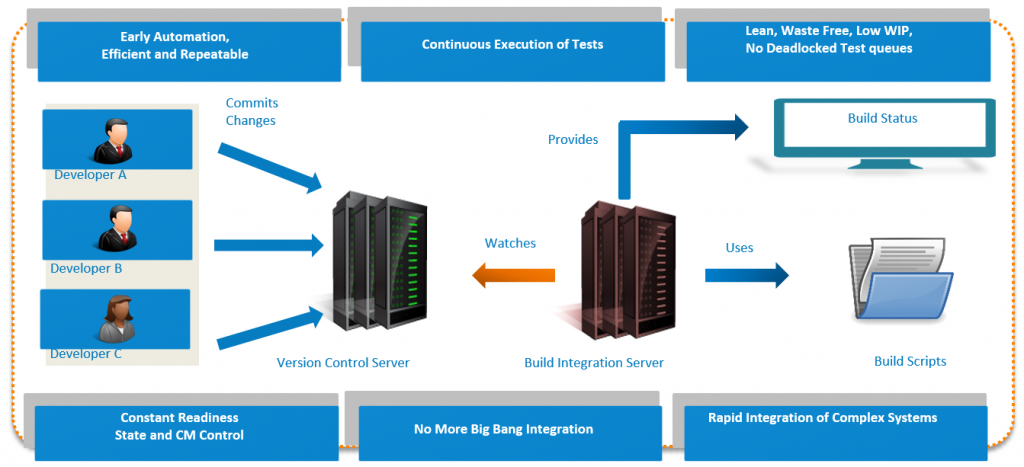How can I Reduce Feedback Latency using Continuous Integration Testing?
Before we get into the main topic, let us first understand the basics.
What is Latency?
Latency, in common terms, is the delay/time lapse between input and output (stimulation and response), or, cause and effect. Considering the fact that any delays in the area of communication adds on to the cost of developing a product – both in terms of time and efforts, it is very important to keep it under control.
What is Continuous Integration?
Continuous Integration (CI) is a paradigm shift in the world of software development that lays huge emphasis on communicating the changes that have been made by the developers. CI requires developers to integrate code into a shared repository several times a day while an automated build verifies each check-in for any problem.
Benefits of CI
Agile teams deliver quality software fast, without death marches or heroics. CI makes this possible.
A properly implemented CI environment usually provides the following benefits to an organization:
- Helps in the rapid integration of complex systems that helps improve the process efficiency across the board, accelerates growth, promotes user-driven innovation, and saves significant IT efforts.
- Helps reduce instances of ‘Big Bang Integration’ wherein all units are linked at once, resulting in a complete system. Testing an instance of Big Bang Integration is very complicated because the errors found cannot be isolated as the interfaces across individual units are not verified properly. As the defects are identified at very late stage, the probability of missing out on some critical defects is very high.
- Helps maintain a state of Constant Readiness that leads to a better CM Control.
- Helps promote and manage early automation, and makes it more efficient and repeatable.
- Helps provide a robust, stable environment that supports continuous execution of tests.
- Helps reduce the number of Deadlocked Test queues, reduces the amount of work categorized as ‘work-in-progress’, and also reduces wastage of resources.
How Does CI Help Reduce Feedback Latency?
In most organizations, multiple developers use a Version Control System to “commit” or “promote” their changes frequently.
If you are a developer, you must have at least once faced the situation wherein you downloaded the latest source code only to realize that cannot compile or had a major issue. Frustrating, is it not?
In a CI environment, a Build Integration Server watches the Version Control Server, and using build scripts, continuously ‘runs’ these committed files. Once these committed files are executed, the Build Integration Server provides a quick feedback in the form of a Build Status report. This report explains whether or not the new lines of code written work properly. In short, a project is built as soon as a change is committed. This not only takes care of the irritating scenario discussed above, but also reduces the latency that will otherwise creep up.
This dynamic environment thus not only saves efforts worth hours of work, but also lets the entire development team quickly get an overall view of the final code. Developers, apart from keeping track of the impact of their code change, can also have a clear view of the changes being incorporated by their peers.
CI, apart from making sure that the code compilation is successful, also checks whether or not the code is performing the tasks as required. Add the functionality of Test Automation. CI, when used with a properly implemented test automation environment ensures and validates the quality of the build generated.
CI servers help reduce any delays by building the code frequently and providing prompt feedback to the developers about the code changes submitted. These continuous integration servers help populate the changes to the build server, initiate the build process, and generate a report explaining the outcome of the tests performed.
CI servers, with all their benefits, are rapidly making waves and are being adopted as a key technology process as part of the Shift Left movement. Organizations can use CI to reduce rework, improve quality, and thereby improve their ROI.
Organizations today, more than ever before, realize the criticality of communicating the results of the builds to the entire development team. CI systems can use flexible means as e-mails or intranet to display build results. A display of the build report helps developers promptly respond to the build results and reduce the latency issues that are usually faced with nightly or weekly integration builds.







Leave a Reply